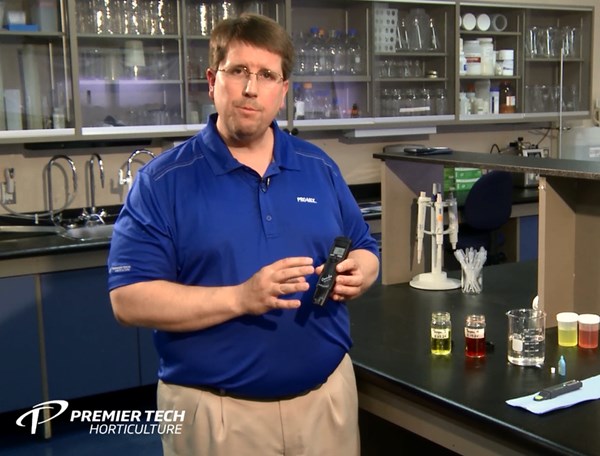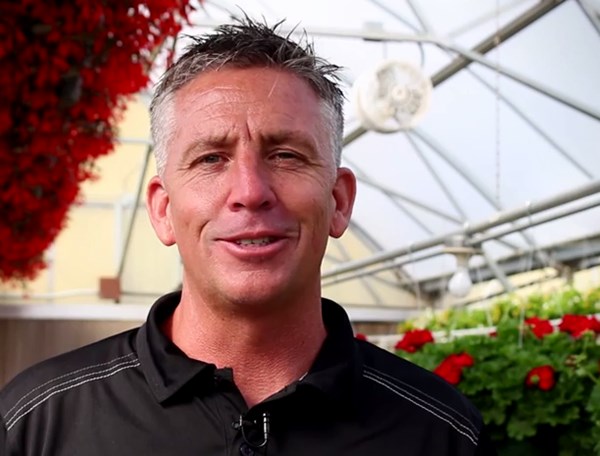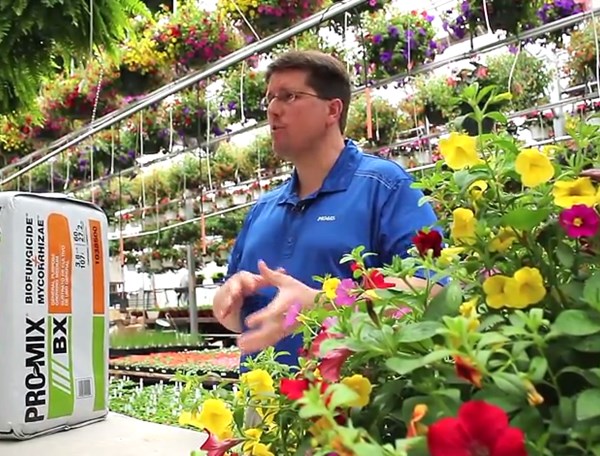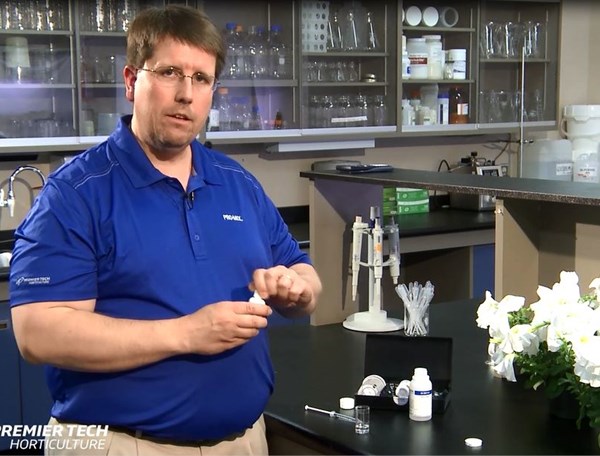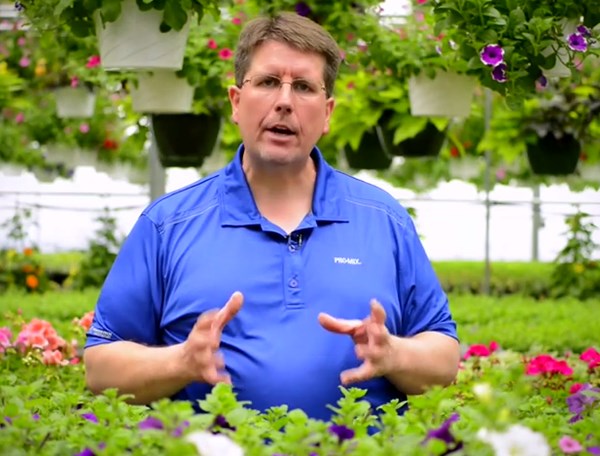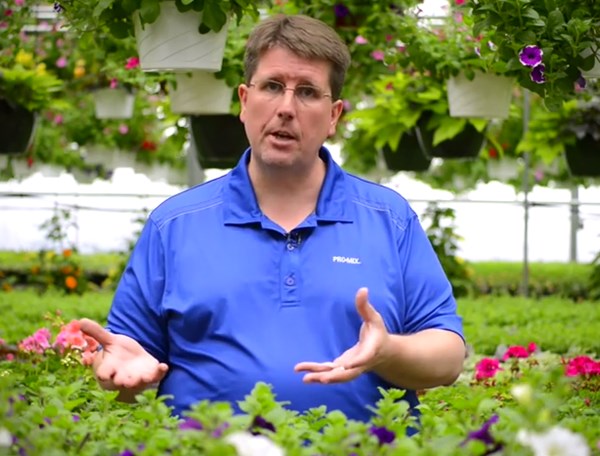Training Center
Growing Medium pH Influences Nutrient Availability
Thursday, September 7, 2023 | Troy Buechel
PDF version of this text: Growing Medium pH Influences Nutrient Availability
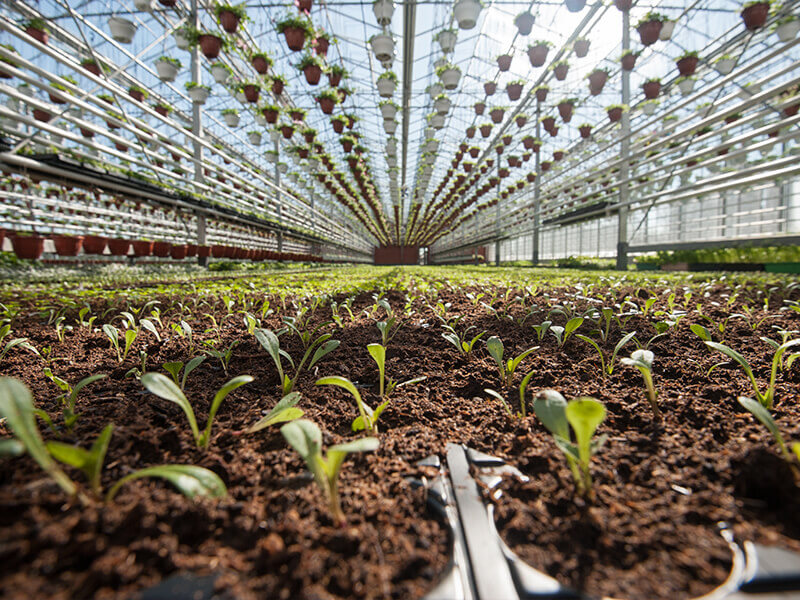
During the crop cycle, some growers may have experienced pH drift that can affect the quality of their plants. The pH of the growing medium does not directly harm the plant; however, it influences the availability of nutrients that the plant can acquire from the growing medium.
Macronutrient Availability
Macronutrients; nitrogen, phosphorus, potassium, calcium, magnesium and sulfate; are needed by all plants in large quantities. The pH of the growing medium has some influence on their availability, especially phosphorus and magnesium, but they are needed in large quantities. Even with an improper growing medium pH, the amount of macronutrients that are tied up or made available is little compared to how much is required by the plant. Often the influence of pH on macronutrients goes unnoticed.
Micronutrient Availability
Micronutrients, on the other hand, are needed in much lower quantities. If the pH of the growing medium is too high or too low, it will significantly influence micronutrient availability for plants. If the growing medium pH rises above 6.0, iron, manganese, zinc, copper and boron start to become insoluble and unavailable for plant uptake. If the pH drops below 5.5, these elements become soluble and are available to the plant. Molybdenum, on the other hand, is the opposite. It becomes soluble at high pH and insoluble at low pH.
Low Availability of Micronutrients
Iron deficiency is the most common micronutrient deficiency and commonly occurs in bacopa, calibrachoa, dianthus, diascia, nemesia, pansy, petunia, scaevola, snapdragon, verbena and vinca. The classic symptom is interveinal chlorosis (yellow leaves with green veins) of the new leaves. Manganese deficiency has similar visual symptoms and can also be seen in these crops. Pansy, petunia and salvia are sensitive to boron deficiency which is expressed as die back of the growing tips and thickened, brittle and distorted side branches. Zinc, copper or molybdenum deficiencies are uncommon, but also cause chlorosis, distortion or curling of new growth. Plants should be tested to confirm micronutrient deficiencies.
There are also non-pH related causes for micronutrient deficiencies. First, if fertilizer application rates are low, then micronutrients are provided at insufficient levels. Second, during cloudy, cool weather, plants use little water. Since fertilizer is dissolved in the growing medium solution, insufficient micronutrients are taken up and nutrient deficiencies occur. Third, if plant roots are diseased they cannot effectively take up micronutrients, leading to deficiencies.
High Availability of Micronutrients
The most common micronutrient toxicity is iron-manganese toxicity and it is occurs when the growing medium pH is too low. It is expressed on the lower leaves of geraniums, lisianthus, marigolds, New Guinea impatiens and pentas as bronze/brown speckles and necrotic leaf edges. Boron toxicity can occur in mums, poinsettia and zinnia especially if high levels are found in the water. Symptoms are similar to iron-manganese toxicity. Zinc, copper or molybdenum toxicities are uncommon, but test the media and tissue for confirmation.
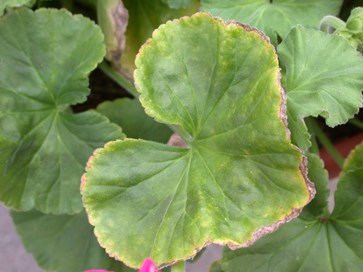
"Iron-Manganese deficiency in geranium"
Excessive availability of micronutrients can also result from over application of water soluble fertilizer or excessive release of controlled release fertilizer. Check water sources as they can provide excessive micronutrients, especially boron. Regardless of a deficiency or toxicity, always test the growing medium and plant tissue to confirm the problem.
For help managing growing media pH and nutrition for your crops grown in PRO-MIX®, please feel free to contact your Premier Tech Horticulture Grower Services representative.
 |
 |
 |
 |
|---|---|---|---|
|
Ed Bloodnick |
Nathan Wallace-Springer |
Lance Lawson |
Victor Brantly |
 |
 |
 |
|
|
Troy Buechel |
Susan Parent |
Jose Chen Lopez |
PRO-MIX® is a registered trademark of PREMIER HORTICULTURE Ltd.
Related Articles
-
Horticulture Specialist from our Grower Services team, Troy Buechel, explains how to calibrate pH & EC meters.
-
Benefits of Analytical Testing
Horticulture Specialist from our Grower Services team, Lance Lawson, explains the benefits of an analytical testing to provide a snapshot in time of the nutrional status of your crops.
-
Growing Media Analysis Interpretation
Horticulture Specialist from our Grower Services team, Troy Buechel, explains how to interpret a Media analysis: pH, EC, Macronutrients and Micronutrients.
-
How to Test Water pH and Alkalinity
Horticulture Specialist from our Grower Services team, Troy Buechel, explains how to test water pH and alkalinity for better results!
-
Macronutrients Deficiencies & Excesses
Horticulture Specialist from our Grower Services team, Troy Buechel, explains what macronutrients are, and their effects on Growing Media.
-
Micronutrients Deficiencies & Excesses
Horticulture Specialist from our Grower Services team, Troy Buechel, explains what micronutrients are, and their effects on Growing Media.

 Where to find our products
Where to find our products
